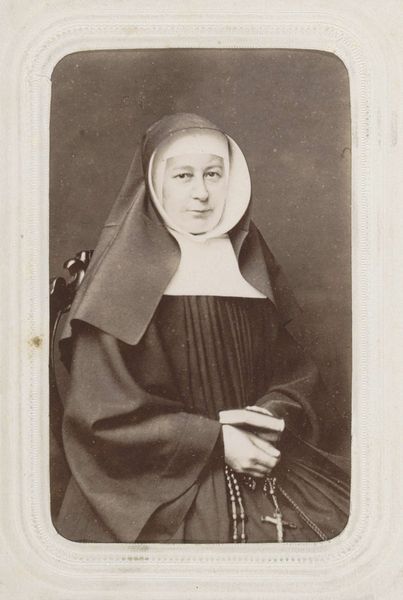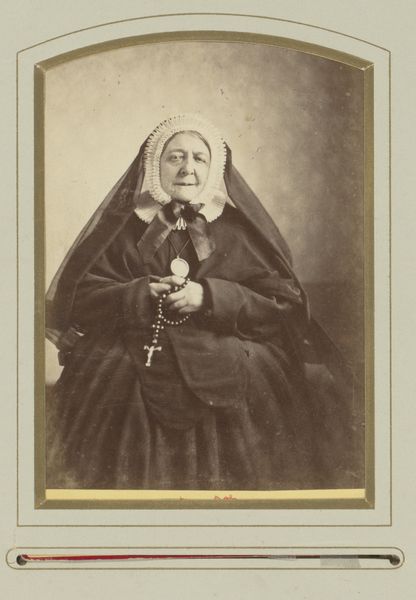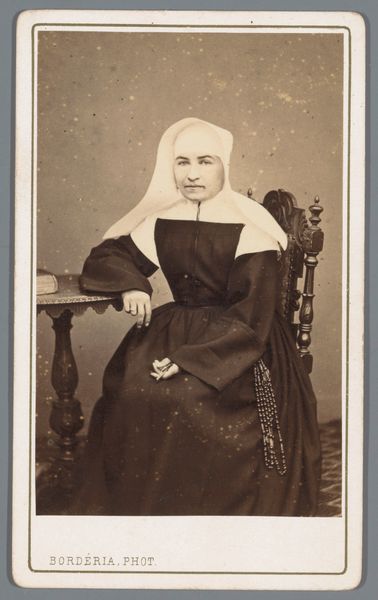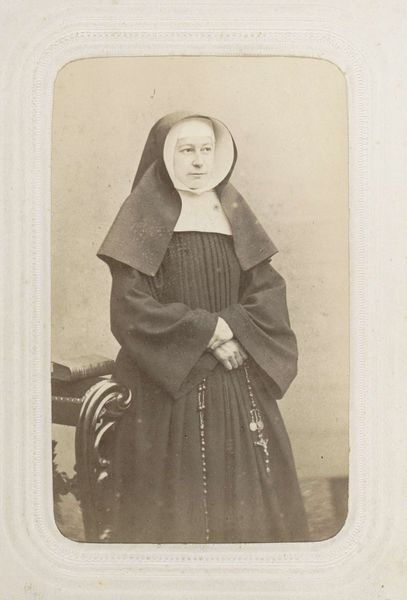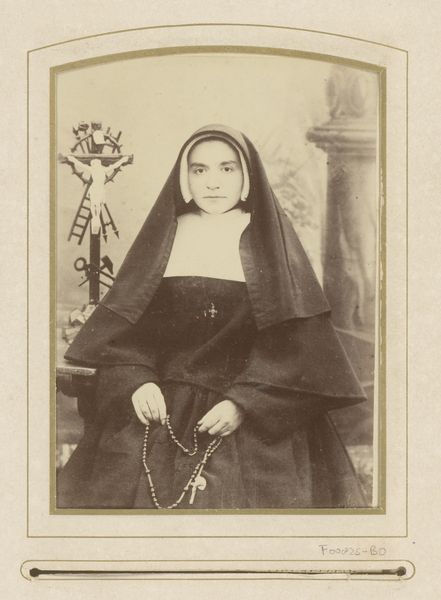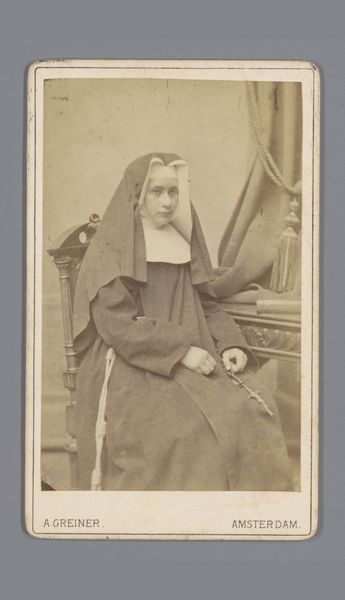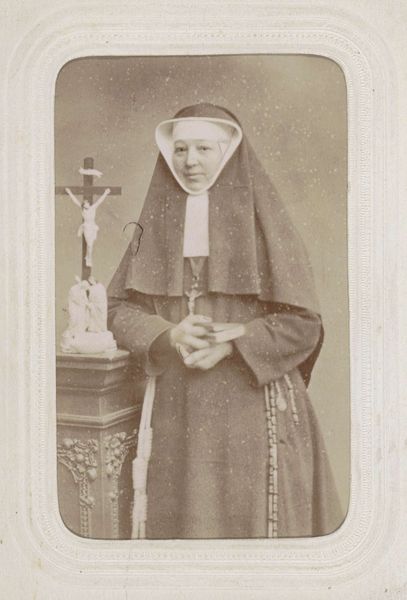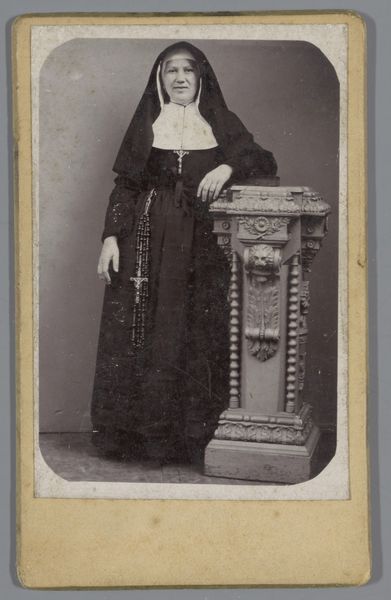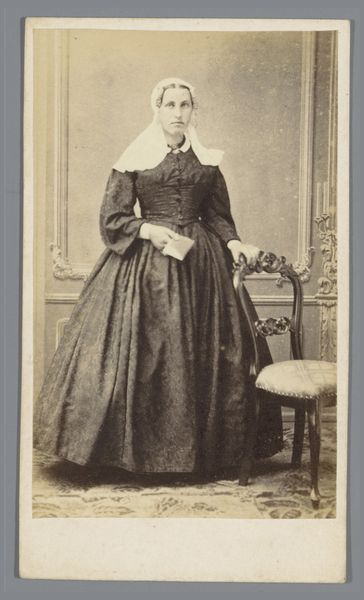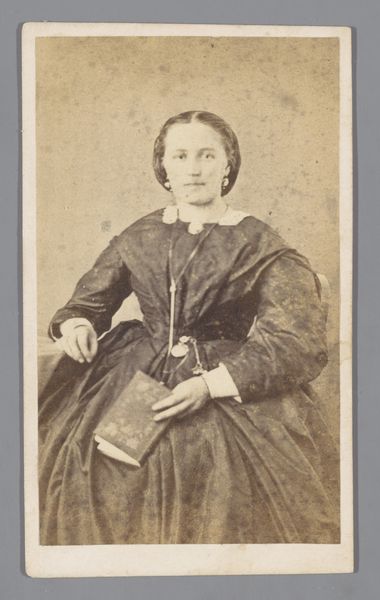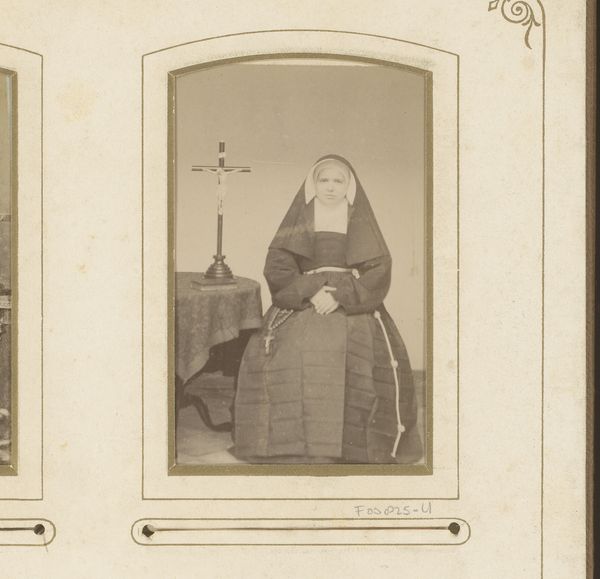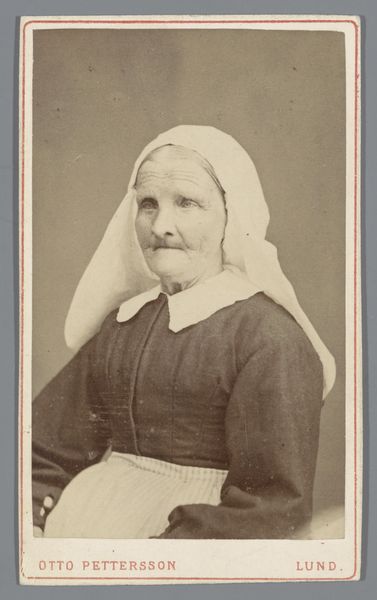
daguerreotype, photography
#
portrait
#
daguerreotype
#
photography
#
realism
Dimensions: height 100 mm, width 61 mm
Copyright: Rijks Museum: Open Domain
Curator: This photograph is titled "Portrait of an Unknown Nun," created sometime between 1865 and 1883 by Théodor Weijnen. It is a daguerreotype, offering a remarkably detailed, albeit slightly melancholic, depiction. Editor: The word that jumps to mind is 'stark'. The limited tonal range and severe framing around her face really isolate her, making the viewer focus intensely on her expression and the austerity of her clothing. Curator: Yes, the materiality of the daguerreotype itself plays a key role. The process, demanding long exposure times, would have necessitated absolute stillness. Considering that, I wonder about the social conditions that enabled a photographer like Weijnen in Maastricht to capture this particular sitter’s likeness. Who commissioned it? And why? Editor: That's a critical question. Was it commissioned by her order as a form of identification or documentation? Or perhaps a final portrait before entering the order permanently, intended for her family? Daguerreotypes were, after all, gaining popularity for public portraiture during this era. What's striking is how these early photographic processes democratized representation – even a nun could access the technology, altering societal views on art. Curator: Indeed. And consider the materials used – the silver-plated copper, the mercury fumes in development, and the eventual presentation under glass. Each of these elements would have affected the final image, subtly shaping its meaning and influencing the consumption of this portrait. Were these images made to last, and to serve some role in maintaining a connection after earthly loss. Editor: Absolutely, this shifts how we might view the institution. This also adds context to how the image circulates – its life extends beyond that studio visit, contributing to the public understanding of both her life and the role of women within the church. Curator: These early photographs highlight a crucial intersection: a newly accessible medium intersecting with rigid social structures and personal agency. It prompts reflection on representation, labor, and identity in a rapidly changing world. Editor: A single image holding so much… from individual sacrifice and commitment, to its contribution in broadening how the masses perceived its figures, captured during times of sweeping socio-economic reform.
Comments
No comments
Be the first to comment and join the conversation on the ultimate creative platform.
